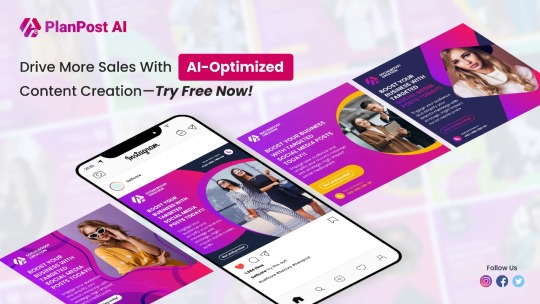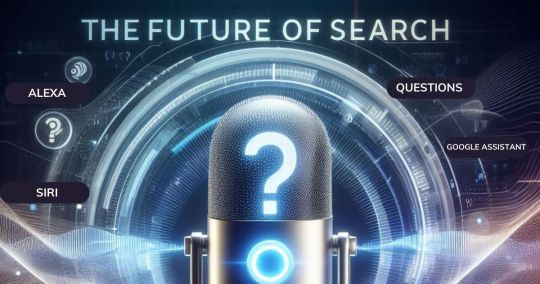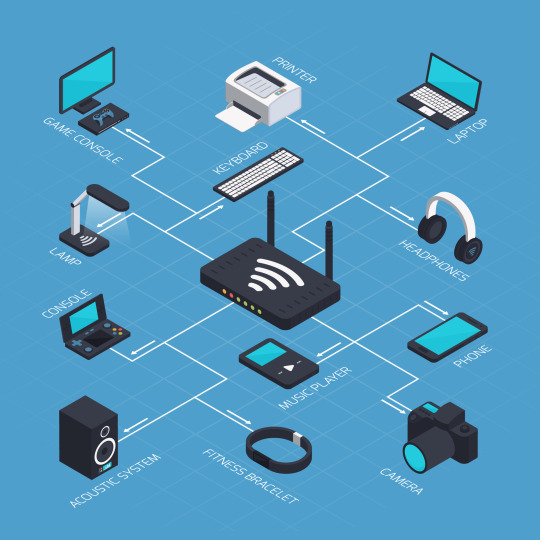#Email automation components
Explore tagged Tumblr posts
Text
Automating Your Email Campaigns: Streamlining Your Marketing Workflow
Email marketing is a powerful tool for businesses to connect with their audience and drive engagement. However, managing email campaigns manually can be time-consuming and resource-intensive. Enter email automation—the process of automating repetitive tasks in your email marketing workflow. In this article, we will explore the benefits of automating your email campaigns and how they can…

View On WordPress
#Autoresponders#CRM systems#Email automation components#Email automation tools#Marketing automation platforms#Triggered emails#Workflows
1 note
·
View note
Text
United States marketing automation market size reached USD 19.1 Billion in 2024. Looking forward, IMARC Group expects the market to reach USD 53.8 Billion by 2033, exhibiting a growth rate (CAGR) of 12.2% during 2025-2033. The rising focus of marketers on strategic initiatives, creative campaigns, and more robust customer relationship management is primarily driving the market growth across the country.
#United States Marketing Automation Market Report by Component Type (Software#Services)#Deployment Type (On-premises#Cloud-based)#End User (SMEs#Large Enterprises)#Application (Campaign Management#Email Marketing#Lead Nurturing and Lead Scoring#Social Media Marketing#Inbound Marketing#and Others)#Vertical (BFSI#Retail#Healthcare#IT and Telecom#Government#Entertainment and Media#Education#and Region 2025-2033
0 notes
Text
On February 10, employees at the Department of Housing and Urban Development (HUD) received an email asking them to list every contract at the bureau and note whether or not it was “critical” to the agency, as well as whether it contained any DEI components. This email was signed by Scott Langmack, who identified himself as a senior adviser to the so-called Department of Government Efficiency (DOGE). Langmack, according to his LinkedIn, already has another job: He’s the chief operating officer of Kukun, a property technology company that is, according to its website, “on a long-term mission to aggregate the hardest to find data.”
As is the case with other DOGE operatives—Tom Krause, for example, is performing the duties of the fiscal assistant secretary at the Treasury while holding down a day job as a software CEO at a company with millions in contracts with the Treasury—this could potentially create a conflict of interest, especially given a specific aspect of his role: According to sources and government documents reviewed by WIRED, Langmack has application-level access to some of the most critical and sensitive systems inside HUD, one of which contains records mapping billions of dollars in expenditures.
Another DOGE operative WIRED has identified is Michael Mirski, who works for TCC Management, a Michigan-based company that owns and operates mobile home parks across the US, and graduated from the Wharton School in 2014. (In a story he wrote for the school’s website, he asserted that the most important thing he learned there was to “Develop the infrastructure to collect data.”) According to the documents, he has write privileges on—meaning he can input overall changes to—a system that controls who has access to HUD systems.
Between them, records reviewed by WIRED show, the DOGE operatives have access to five different HUD systems. According to a HUD source with direct knowledge, this gives the DOGE operatives access to vast troves of data. These range from the individual identities of every single federal public housing voucher holder in the US, along with their financial information, to information on the hospitals, nursing homes, multifamily housing, and senior living facilities that HUD helps finance, as well as data on everything from homelessness rates to environmental and health hazards to federally insured mortgages.
Put together, experts and HUD sources say, all of this could give someone with access unique insight into the US real estate market.
Kukun did not respond to requests for comment about whether Langmack is drawing a salary while working at HUD or how long he will be with the department. A woman who answered the phone at TCC Management headquarters in Michigan but did not identify herself said Mirksi was "on leave until July." In response to a request for comment about Langmack’s access to systems, HUD spokesperson Kasey Lovett said, “DOGE and HUD are working as a team; to insinuate anything else is false. To further illustrate this unified mission, the secretary established a HUD DOGE taskforce.” In response to specific questions about Mirski’s access to systems and background and qualifications, she said, “We have not—and will not—comment on individual personnel. We are focused on serving the American people and working as one team.”
The property technology, or proptech, market covers a wide range of companies offering products and services meant to, for example, automate tenant-landlord interactions, or expedite the home purchasing process. Kukun focuses on helping homeowners and real estate investors assess the return on investment they’d get from renovating their properties and on predictive analytics that model where property values will rise in the future.
Doing this kind of estimation requires the use of what’s called an automated valuation model (AVM), a machine-learning model that predicts the prices or rents of certain properties. In April 2024, Kukun was one of eight companies selected to receive support from REACH, an accelerator run by the venture capital arm of the National Association of Realtors (NAR). Last year NAR agreed to a settlement with Missouri homebuyers, who alleged that realtor fees and certain listing requirements were anticompetitive.
“If you can better predict than others how a certain neighborhood will develop, you can invest in that market,” says Fabian Braesemann, a researcher at the Oxford Internet Institute. Doing so requires data, access to which can make any machine-learning model more accurate and more monetizable. This is the crux of the potential conflict of interest: While it is unclear how Langmack and Mirski are using or interpreting it in their roles at HUD, what is clear is that they have access to a wide range of sensitive data.
According to employees at HUD who spoke to WIRED on the condition of anonymity, there is currently a six-person DOGE team operating within the department. Four members are HUD employees whose tenures predate the current administration and have been assigned to the group; the others are Mirski and Langmack. The records reviewed by WIRED show that Mirski has been given read and write access to three different HUD systems, as well as read-only access to two more, while Langmack has been given read and write access to two of HUD’s core systems.
A positive, from one source’s perspective, is the fact that the DOGE operatives have been given application-level access to the systems, rather than direct access to the databases themselves. In theory, this means that they can only interact with the data through user interfaces, rather than having direct access to the server, which could allow them to execute queries directly on the database or make unrestricted or irreparable changes. However, this source still sees dangers inherent in granting this level of access.
“There are probably a dozen-plus ways that [application-level] read/write access to WASS or LOCCS could be translated into the entire databases being exfiltrated,” they said. There is no specific reason to think that DOGE operatives have inappropriately moved data—but even the possibility cuts against standard security protocols that HUD sources say are typically in place.
LOCCS, or Line of Credit Control System, is the first system to which both DOGE operatives within HUD, according to the records reviewed by WIRED, have both read and write access. Essentially HUD’s banking system, LOCCS “handles disbursement and cash management for the majority of HUD grant programs,” according to a user guide. Billions of dollars flow through the system every year, funding everything from public housing to disaster relief—such as rebuilding from the recent LA wildfires—to food security programs and rent payments.
The current balance in the LOCCS system, according to a record reviewed by WIRED, is over $100 billion—money Congress has approved for HUD projects but which has yet to be drawn down. Much of this money has been earmarked to cover disaster assistance and community development work, a source at the agency says.
Normally, those who have access to LOCCS require additional processing and approvals to access the system, and most only have “read” access, department employees say.
“Read/write is used for executing contracts and grants on the LOCCS side,” says one person. “It normally has strict banking procedures around doing anything with funds. For instance, you usually need at least two people to approve any decisions—same as you would with bank tellers in a physical bank.”
The second system to which documents indicate both DOGE operatives at HUD have both read and write access is the HUD Central Accounting and Program System (HUDCAPS), an “integrated management system for Section 8 programs under the jurisdiction of the Office of Public and Indian Housing,” according to HUD. (Section 8 is a federal program administered through local housing agencies that provides rental assistance, in the form of vouchers, to millions of lower-income families.) This system was a precursor to LOCCS and is currently being phased out, but it is still being used to process the payment of housing vouchers and contains huge amounts of personal information.
There are currently 2.3 million families in receipt of housing vouchers in the US, according to HUD’s own data, but the HUDCAPS database contains information on significantly more individuals because historical data is retained, says a source familiar with the system. People applying for HUD programs like housing vouchers have to submit sensitive personal information, including medical records and personal narratives.
“People entrust these stories to HUD,” the source says. “It’s not data in these systems, it’s operational trust.”
WASS, or the Web Access Security Subsystem, is the third system to which DOGE has both read and write access, though only Mirski has access to this system according to documents reviewed by WIRED. It’s used to grant permissions to other HUD systems. “Most of the functionality in WASS consists of looking up information stored in various tables to tell the security subsystem who you are, where you can go, and what you can do when you get there,” a user manual says.
“WASS is an application for provisioning rights to most if not all other HUD systems,” says a HUD source familiar with the systems who is shocked by Mirski’s level of access, because normally HUD employees don’t have read access, let alone write access. “WASS is the system for setting permissions for all of the other systems.”
In addition to these three systems, documents show that Mirski has read-only access to two others. One, the Integrated Disbursement and Information System (IDIS), is a nationwide database that tracks all HUD programs underway across the country. (“IDIS has confidential data about hidden locations of domestic violence shelters,” a HUD source says, “so even read access in there is horrible.”) The other is the Financial Assessment of Public Housing (FASS-PH), a database designed to “measure the financial condition of public housing agencies and assess their ability to provide safe and decent housing,” according to HUD’s website.
All of this is significant because, in addition to the potential for privacy violations, knowing what is in the records, or even having access to them, presents a serious potential conflict of interest.
“There are often bids to contract any development projects,” says Erin McElroy, an assistant professor at the University of Washington. “I can imagine having insider information definitely benefiting the private market, or those who will move back into the private market,” she alleges.
HUD has an oversight role in the mobile home space, the area on which TCC Management, which appears to have recently wiped its website, focuses. "It’s been a growing area of HUD’s work and focus over the past few decades," says one source there; this includes setting building standards, inspecting factories, and taking in complaints. This presents another potential conflict of interest.
Braesemann says it’s not just the insider access to information and data that could be a potential problem, but that people coming from the private sector may not understand the point of HUD programs. Something like Section 8 housing, he notes, could be perceived as not working in alignment with market forces—“Because there might be higher real estate value, these people should be displaced and go somewhere else”—even though its purpose is specifically to buffer against the market.
Like other government agencies, HUD is facing mass purges of its workforce. NPR has reported that 84 percent of the staff of the Office of Community Planning and Development, which supports homeless people, faces termination, while the president of a union representing HUD workers has estimated that up to half the workforce could be cut The chapter on housing policy in Project 2025—the right-wing playbook to remake the federal government that the Trump administration appears to be following—outlines plans to massively scale back HUD programs like public housing, housing assistance vouchers, and first-time home buyer assistance.
16 notes
·
View notes
Text
The Bezzle excerpt (Part II)

I'm on tour with my new novel The Bezzle! Catch me next in SALT LAKE CITY (Feb 21, Weller Book Works) and SAN DIEGO (Feb 22, Mysterious Galaxy). After that, it's LA, Seattle, Portland, Phoenix and more!

Today, I'm bringing you part two of this week's serialized excerpt from The Bezzle, my new Martin Hench high-tech crime revenge thriller:
https://us.macmillan.com/books/9781250865878/thebezzle
Though most of the scams that Hench – a two-fisted forensic accountant specializing in Silicon Valley skullduggery – goes after in The Bezzle have a strong tech component, this excerpt concerns a pre-digital scam: music royalty theft.
This is a subject that I got really deep into when researching and writing 2022's Chokepoint Capitalism – a manifesto for fixing creative labor markets:
https://chokepointcapitalism.com/
My co-author on that book is Rebecca Giblin, who also happens to be one of the world's leading experts in "copyright termination" – the legal right of creative workers to claw back any rights they signed over after 35 years:
https://pluralistic.net/2021/09/26/take-it-back/
This was enshrined in the 1976 Copyright Act, and has largely languished in obscurity since then, though recent years have seen creators of all kinds getting their rights back through termination – the authors of The Babysitters Club and Sweet Valley High Books, Stephen King, and George Clinton, to name a few. The estates of the core team at Marvel Comics, including Stan Lee, just settled a case that might have let them take the rights to all those characters back from Disney:
https://www.thewrap.com/marvel-settles-spiderman-lawsuit-steve-ditko/
Copyright termination is a powerful tonic to the bargaining disparities between creative workers. A creative worker who signs a bad contract at the start of their career can – if they choose – tear that contract up 35 years later and demand a better one.
Turning this into a plot-point in The Bezzle is the kind of thing that I love about this series – the ability to take important, obscure, technical aspects of how the world works and turn them into high-stakes technothriller storylines that bring them to the audience they deserve.
If you signed something away 35 years ago and you want to get it back, try Rights Back, an automated termination of tranfer tool co-developed by Creative Commons and Authors Alliance (whose advisory board I volunteer on):
https://rightsback.org/
All right, onto today's installment. Here's part one, published on Saturday:
https://pluralistic.net/2024/02/17/the-steve-soul-caper/#lead-singer-disease

It was on one of those drives where Stefon learned about copyright termination. It was 2011, and NPR was doing a story on the 1976 Copyright Act, passed the same year that was on the bottom of the document Chuy forged.
Under the ’76 act, artists acquired a “termination right”— that is, the power to cancel any copyright assignment after thirty-five years, even if they signed a contract promising to sign away their rights forever and a day (or until the copyright ran out, which was nearly the same thing).
Listening to a smart, assured lady law professor from UC Berkeley explaining how this termination thing worked, Stefon got a wild idea. He pulled over and found a stub of a pencil and the back of a parking-ticket envelope and wrote down the professor’s name when it was repeated at the end of the program. The next day he went to the Inglewood Public Library and got a reference librarian to teach him how to look up a UC Berkeley email address and he sent an email to the professor asking how he could terminate his copyright assignment.
He was pretty sure she wasn’t going to answer him, but she did, in less than a day. He got the email on his son’s smartphone and the boy helped him send a reply asking if he could call her. One thing led to another and two weeks later, he’d filed the paperwork with the U.S. Copyright Office, along with a check for one hundred dollars.
Time passed, and Stefon mostly forgot about his paperwork adventure with the Copyright Office, though every now and again he’d remember, think about that hundred dollars, and shake his head. Then, nearly a year later, there it was, in his mailbox: a letter saying that his copyright assignment had been canceled and his copyrights were his again. There was also a copy of a letter that had been sent to Chuy, explaining the same thing.
Stefon knew a lawyer—well, almost a lawyer, an ex–trumpet player who became a paralegal after one time subbing for Sly Stone’s usual guy, and then never getting another gig that good. He invited Jamal over for dinner and cooked his best pot roast and served it with good whiskey and then Jamal agreed to send a letter to Inglewood Jams, informing them that Chuy no longer controlled his copyrights and they had to deal with him direct from now on.
Stefon hand-delivered the letter the next day, wearing his good suit for reasons he couldn’t explain. The receptionist took it without a blink. He waited.
“Thank you,” she said, pointedly, glancing at the door.
“I can wait,” he said.
“For what?” She reminded him of his boy’s girlfriend, a sophomore a year younger than him. Both women projected a fierce message that they were done with everyone’s shit, especially shit from men, especially old men. He chose his words carefully.
“I don’t know, honestly.” He smiled shyly. He was a good-looking man, still. That smile had once beamed out of televisions all over America, from the Soul Train stage. “But ma’am, begging your pardon, that letter is about my music, which you all sell here. You sell a lot of it, and I want to talk that over with whoever is in charge of that business.”
She let down her guard by one minute increment. “You’ll want Mr. Gounder,” she said. “He’s not in today. Give me your phone number, I’ll have him call.”
He did, but Mr. Gounder didn’t call. He called back two days later, and the day after that, and the following Monday, and then he went back to the office. The receptionist who reminded him of his son’s girlfriend gave him a shocked look.
“Hello,” he said, and tried out that shy smile. “I wonder if I might see that Mr. Gounder.”
She grew visibly uncomfortable. “Mr. Gounder isn’t in today,” she lied. “I see,” he said. “Will he be in tomorrow?”
“No,” she said.
“The day after?”
“No.” Softer.
“Is that Mr. Gounder of yours ever coming in?”
She sighed. “Mr. Gounder doesn’t want to speak with you, I’m sorry.”
The smile hadn’t worked, so he switched to the look he used to give his bandmates when they wouldn’t cooperate. “Maybe someone can tell me why?”
A door behind her had been open a crack; now it swung wide and a young man came out. He looked Hispanic, with a sharp fade and flashy sneakers, but he didn’t talk like a club kid or a hood rat—he sounded like a USC law student.
“Sir, if you have a claim you’d like Mr. Gounder to engage with, please have your attorney contact him directly.”
Stefon looked this kid up and down and up, tried and failed to catch the receptionist’s eye, and said, “Maybe I can talk this over with you. Are you someone in charge around here?”
“I’m Xavier Perez. I’m vice president for catalog development here. I don’t deal with legal claims, though. That’s strictly Mr. Gounder’s job. Please have your attorney put your query in writing and Mr. Gounder will be in touch as soon as is feasible.”
“I did have a lawyer write him a letter,” Stefon said. “I gave it to this young woman. Mr. Gounder hasn’t been in touch.”
Perez looked at the receptionist. “Did you receive a letter from this gentleman?”
She nodded, still not meeting Stefon’s eye. “I gave it to Mr. Gounder last week.”
Perez grinned, showing a gold tooth, and then, in his white, white voice, said, “There you have it. I’m sure Mr. Gounder will get back in touch with your counsel soon. Thank you for coming in today, Mr.—”
“Stefon Magner.” Stefon waited a moment, then said, for the first time in many years, “I used to perform under Steve Soul, though.”
Perez nodded briskly. He’d known that. “Nice to meet you, Mr. Magner.” Without waiting for a reply, he disappeared back into his office.
ETA: Here's part three!

If you'd like an essay-formatted version of this post to read or share, here's a link to it on pluralistic.net, my surveillance-free, ad-free, tracker-free blog:
https://pluralistic.net/2024/02/19/crad-kilodney-was-an-outlier/#copyright-termination
#pluralistic#the bezzle#martin hench#marty hench#red team blues#fiction#crime fiction#crime thrillers#thrillers#technothrillers#novels#books#royalties#wage theft#creative labor
29 notes
·
View notes
Text
The Power of Digital Marketing: A Comprehensive Guide
Introduction
In today’s fast-paced, technology-driven world, digital marketing has become an essential component of business success. The rapid growth of the internet, mobile devices, and social media platforms has reshaped the way businesses reach and engage with their audience. Unlike traditional marketing methods, digital marketing offers precise targeting, real-time analytics, and cost-effective strategies to enhance brand visibility and customer engagement. This article delves into the key aspects of digital marketing, its benefits, strategies, and future trends.
What is Digital Marketing?
Digital marketing encompasses all marketing efforts that use electronic devices or the internet. Businesses leverage various digital channels such as search engines, social media, email, websites, and mobile applications to connect with current and prospective customers. Digital marketing is an umbrella term that includes several key components:
Search Engine Optimization (SEO)
Content Marketing
Social Media Marketing (SMM)
Pay-Per-Click Advertising (PPC)
Email Marketing
Affiliate Marketing
Influencer Marketing
Marketing Automation
Mobile Marketing
Benefits of Digital Marketing
1. Cost-Effectiveness
Compared to traditional marketing methods, digital marketing is significantly more affordable. Small and medium-sized businesses can reach a global audience with a limited budget.
2. Measurable Results
Digital marketing allows businesses to track and analyze the performance of their campaigns in real time. Tools like Google Analytics, SEMrush, and HubSpot provide insights into website traffic, engagement, conversion rates, and more.
3. Targeted Advertising
With digital marketing, businesses can precisely target their audience based on demographics, interests, online behavior, and geographic location. This ensures that marketing efforts are reaching the right people at the right time.
4. Higher Engagement Rates
Social media platforms and interactive content enable businesses to engage directly with their audience. Engaged customers are more likely to convert and become loyal brand advocates.
5. Global Reach
Unlike traditional marketing, which is often limited by geography, digital marketing allows businesses to reach audiences worldwide. This is particularly beneficial for e-commerce brands looking to expand their customer base.
Key Digital Marketing Strategies
1. Search Engine Optimization (SEO)
SEO involves optimizing a website’s content and structure to rank higher on search engine results pages (SERPs). The goal is to increase organic traffic by improving visibility on search engines like Google and Bing. SEO strategies include:
Keyword research
On-page optimization (meta descriptions, alt text, internal linking)
Off-page optimization (backlinks, social sharing)
Technical SEO (site speed, mobile-friendliness, structured data)
2. Content Marketing
Content marketing focuses on creating valuable, relevant, and consistent content to attract and retain an audience. It includes:
Blog posts
Infographics
Videos
E-books and whitepapers
Case studies
3. Social Media Marketing (SMM)
Social media marketing involves using platforms like Facebook, Instagram, Twitter, LinkedIn, and TikTok to promote products and engage with customers. Key strategies include:
Creating engaging posts and videos
Running targeted ads
Collaborating with influencers
Hosting live sessions and Q&A forums
4. Pay-Per-Click Advertising (PPC)
PPC is a digital advertising model where businesses pay a fee each time their ad is clicked. Google Ads and social media advertising platforms like Facebook Ads offer PPC advertising. Strategies include:
Keyword targeting
A/B testing for ad copies
Retargeting to capture potential customers
5. Email Marketing
Email marketing involves sending personalized messages to a targeted audience to nurture leads and maintain customer relationships. Key elements include:
Personalized subject lines
Segmentation and automation
A/B testing
Compelling call-to-actions (CTAs)
6. Affiliate Marketing
Affiliate marketing is a performance-based strategy where businesses reward affiliates for driving traffic or sales. This is often done through:
Bloggers and influencers promoting products
Coupon and cashback websites
Affiliate networks like Amazon Associates
7. Influencer Marketing
Influencer marketing leverages individuals with a strong online presence to promote products and services. Businesses partner with influencers to reach a broader audience and build brand credibility.
8. Marketing Automation
Marketing automation uses technology to streamline marketing efforts and improve efficiency. Common tools include HubSpot, Marketo, and Mailchimp, which help with:
Automated email campaigns
Lead nurturing
Customer relationship management (CRM)
9. Mobile Marketing
With the rise of smartphones, mobile marketing has become crucial. It includes:

Future Trends in Digital Marketing
1. Artificial Intelligence (AI) and Machine Learning
AI-driven marketing tools analyze data and predict customer behavior to enhance personalization and engagement. Chatbots, AI-powered recommendations, and automated content creation are becoming mainstream.
2. Voice Search Optimization
With the increasing use of smart speakers and voice assistants like Siri and Alexa, optimizing content for voice search is crucial. This involves focusing on conversational keywords and answering direct queries.
3. Video Marketing
Video content continues to dominate digital marketing, with platforms like YouTube, TikTok, and Instagram Reels leading the way. Live streaming, interactive videos, and short-form content are gaining popularity.
4. Blockchain and Data Privacy
With growing concerns about data privacy, blockchain technology is being explored to provide transparency in digital advertising and secure transactions.
5. Augmented Reality (AR) and Virtual Reality (VR)

Conclusion
Digital marketing has revolutionized the way businesses interact with customers. Its cost-effectiveness, data-driven approach, and global reach make it an indispensable part of modern business strategies. By leveraging SEO, content marketing, social media, PPC, email marketing, and emerging trends, businesses can stay ahead of the competition and achieve sustainable growth. As technology continues to evolve, stay updated with the latest trends and best practices in digital marketing with Zypher learning.
2 notes
·
View notes
Text
The Future of Marketing – Delhi’s Most Trusted Digital Agency
In today’s fast-evolving digital landscape, businesses must stay ahead of marketing trends to remain competitive. With the rapid advancements in AI, automation, and personalized strategies, the future of marketing is more dynamic than ever. As businesses in Delhi look to scale and reach broader audiences, partnering with a trusted digital marketing agency becomes essential. Here’s how Delhi’s leading digital agencies are shaping the future of marketing and driving business success.
1. AI-Driven Marketing Strategies
Artificial intelligence (AI) is transforming digital marketing by enabling brands to understand consumer behavior more effectively. Delhi-based digital agencies are integrating AI-driven analytics, chatbots, and automated content creation to optimize marketing efforts. From predictive analytics to AI-powered ad targeting, businesses can now create personalized experiences for their customers at scale.
2. Hyper-Personalization for Better Engagement
Modern consumers expect personalized experiences that cater to their specific needs. The top digital marketing agencies in Delhi utilize customer data and behavior tracking to deliver hyper-personalized content, emails, and advertisements. By leveraging AI and machine learning, brands can engage users more effectively and drive higher conversions.
3. Omnichannel Marketing Approach
Gone are the days of single-platform marketing. The future lies in an omnichannel strategy that integrates SEO, PPC, social media, content marketing, and influencer collaborations. Delhi’s best digital agencies focus on building cohesive campaigns that provide a seamless experience across multiple platforms, ensuring maximum brand visibility and engagement.
4. Voice and Visual Search Optimization
With the rise of voice assistants like Alexa, Siri, and Google Assistant, voice search is becoming a key component of SEO. Similarly, visual search through platforms like Pinterest and Google Lens is revolutionizing how people find products online. Digital marketing agencies in Delhi are now optimizing content for voice and visual searches, helping businesses stay ahead in search rankings.
5. Data-Driven Decision Making
Marketing without data is like driving blind. The future of marketing relies on data-driven insights that enable brands to make informed decisions. Delhi’s leading agencies use advanced analytics tools to track campaign performance, audience behavior, and customer preferences, ensuring that every marketing effort delivers measurable results.
6. Interactive and Video Content Dominance
The demand for interactive and video content is skyrocketing. Businesses that leverage short-form videos, live streaming, and interactive ads will have a significant competitive edge. Delhi’s digital marketing experts focus on creating engaging video content that boosts brand recall and audience engagement across platforms like Instagram Reels, YouTube, and TikTok.
7. Sustainable and Ethical Marketing
Consumers are becoming more conscious of sustainability and ethical practices. Brands that adopt transparent and responsible marketing strategies gain customer trust and loyalty. Digital agencies in Delhi are helping businesses craft authentic narratives that align with social and environmental values, making them more appealing to modern consumers.
The future of marketing is data-driven, AI-powered, and customer-centric. As businesses in Delhi continue to expand their digital footprint, working with a trusted digital marketing agency is the key to long-term success. Whether you aim to enhance brand awareness, improve lead generation, or dominate search rankings, embracing the latest digital marketing trends will ensure you stay ahead of the competition.
Partner with Delhi’s most trusted digital marketing agency today and unlock the full potential of your business in the digital era!
Get Online @ https://thewebd.com
2 notes
·
View notes
Text
I sent an email a month ago about KOSA before the vote in the Senate. It's now August 26, and I only now got an automated email from his office. I don't think anyone actually reads these bc I was very clear about the fact that I did not agree with this bill and the reasons why, and the email is just them stating that they support the bill and tue dates that it was voted on. Not even addressing any common concerns that I know they've been told. They just completely ignored what I and everyone has been saying about this bill.
I just think it is so disingenuous to just ignore your people concerns. You're supposed to be representing us.
Anyway, here's the email.
Thank you for contacting me about the Kids Online Safety Act (S. 1409). I appreciate hearing from you.
I am a cosponsor of the Kids Online Safety Act. Introduced by Senator Richard Blumenthal of Connecticut, this bill would require social media platforms to offer minors options to protect their information and opt out of algorithmic recommendations, give parents new controls to identify negative behaviors online directed toward minors, and create a responsibility for these platforms to prevent and mitigate harms to minors.
The emergence of the internet has given people the opportunity to share information and connect in ways like never before. However, some of this online material poses a real threat to minors. Algorithmic recommendations that cultivate suicidal thoughts and behaviors, drive children to develop harmful eating disorders, and spread hateful rhetoric have helped create a mental health crisis among our youth.
As the Chair of the Senate Judiciary Committee, I have made protecting children online a top legislative priority. On February 14, 2023, I held a hearing that examined the challenges of ensuring online child safety and protecting privacy. I also introduced the STOP CSAM Act (S. 1199), a comprehensive bill that would close gaps in the law and crack down on the proliferation of child sexual abuse material (CSAM) online. On May 11, 2023, the Senate Judiciary Committee unanimously voted to advance this bill out of committee and send it to the full Senate for consideration.
On July 30, 2024, the Senate passed a landmark children's online privacy and safety measure titled the Kids Online Safety and Privacy Act (S. 2073) by a vote of 91-2. This bill is comprised of components of the Kids Online Safety Act and the Children and Teens' Online Privacy Protection Act (S. 1418), including provisions that would establish a duty of care for social media platforms to prevent harm to children and ban targeted ads to children and teens. I voted for the Kids Online Safety and Privacy Act because it is a powerful step forward in safeguarding children on the internet.
+++
Thank you again for contacting me. Please feel free to keep in touch.
Sincerely,
Richard J. Durbin
United States Senator
5 notes
·
View notes
Text

How AI-Driven Marketing & Automation Are Revolutionizing Digital Advertising in 2025
The digital advertising landscape is undergoing a seismic shift. By 2025, the global digital ad market is projected to exceed $1.3 trillion, driven by advancements in artificial intelligence (AI) and automation. Brands that fail to adapt risk being left behind. In this article, we explore how AI-driven marketing and automation are reshaping strategies, enhancing efficiency, and delivering unprecedented ROI in 2025.
The Rise of AI in Marketing
AI has evolved from a buzzword to a core component of marketing strategies. By 2025, over 80% of industry leaders will leverage AI tools to optimize campaigns, personalize experiences, and predict consumer behavior. Machine learning algorithms now process vast datasets in real time, enabling marketers to make data-driven decisions faster than ever.
Key Trends Shaping AI-Driven Marketing in 2025
1. Hyper-Personalization at Scale
Gone are the days of generic ads. AI analyzes behavioral, demographic, and contextual data to craft hyper-personalized content. For example:
Dynamic Email Campaigns: Tools like PlanPost AI generate tailored subject lines and product recommendations, boosting open rates by 40%.
Personalized Ads: AI adjusts creatives in real time based on user interactions, increasing conversion rates by 30%.
2. Predictive Analytics and Decision-Making
AI’s predictive capabilities allow brands to forecast trends and consumer needs. PlanPost AI’s predictive analytics tools, for instance, help businesses allocate budgets to high-performing channels, reducing wasted ad spend by up to 50%.
3. Autonomous Campaign Management
Self-optimizing campaigns are the future. AI algorithms adjust bids, audiences, and creatives autonomously. A clothing brand using PlanPost AI reported a 25% increase in ROAS after switching to AI-managed campaigns.
4. Enhanced Customer Journey Mapping
AI identifies gaps in the customer journey by analyzing touchpoints across devices and platforms. This enables brands to deliver seamless experiences, improving retention by 35%.
5. Voice and Visual Search Optimization
With 60% of consumers using voice or visual search in 2025, AI tools optimize content for natural language queries and image recognition, ensuring brands remain visible in evolving search ecosystems.
The Role of Automation in Digital Advertising
Programmatic Advertising 2.0
Automation powers real-time bidding (RTB) and ad placements. AI-enhanced programmatic platforms like PlanPost AI analyze user intent, serving ads at the perfect moment while reducing costs by 20%.
Chatbots and Conversational AI
Intelligent chatbots handle 70% of customer interactions by 2025, resolving queries instantly and nurturing leads 24/7.
AI-Powered Content Generation
Tools like PlanPost AI create high-quality blog posts, social media captions, and video scripts in minutes, freeing teams to focus on strategy.
Cross-Channel Integration
Automation unifies campaigns across Google Ads, Meta, TikTok, and emerging platforms. AI tracks performance metrics, reallocating budgets dynamically for maximum impact.
PlanPost AI: Your Partner in the AI Marketing Revolution
PlanPost AI stands out as a comprehensive solution for 2025’s challenges. Key features include:
Predictive Budget Allocation: Maximize ROI with AI-driven spend recommendations.
Dynamic Creative Optimization (DCO): Auto-generate ads tailored to individual users.
Cross-Platform Analytics: Track performance in real time across 10+ channels.
Ethical AI Compliance: Built-in safeguards to ensure data privacy and reduce bias.
Challenges and Ethical Considerations
While AI offers immense potential, challenges persist:
Data Privacy: Stricter regulations like GDPR require transparent data usage.
Algorithmic Bias: Regular audits are critical to avoid skewed outcomes.
Over-Automation: Balancing AI efficiency with human creativity remains key.
Conclusion: Embrace the Future Today
AI-driven marketing and automation aren’t just trends—they’re the foundation of 2025’s digital advertising ecosystem. Brands that adopt tools like PlanPost AI will dominate through hyper-personalized campaigns, predictive insights, and seamless cross-channel execution.
Ready to revolutionize your strategy? Explore PlanPost AI’s cutting-edge solutions and stay ahead in the AI marketing race.
#business#design#tech#artificial intelligence#graphic design#copywriting#scheduled#ai content creation#ai content generation#social media marketing#ai content tools#digital marketing#ai image#technology
2 notes
·
View notes
Text
10 Essential Digital Marketing Tips to Boost Your Business in 2024
In today’s rapidly evolving digital landscape, businesses of all sizes must stay up-to-date with the latest marketing strategies. The internet has changed the way consumers interact with brands, and as we approach 2024, mastering digital marketing will be more critical than ever. To help you stay competitive and drive meaningful results, here are 10 essential digital marketing tips that will elevate your business in the coming year.
1. Optimise for Voice Search
With the growing popularity of voice-activated devices like Amazon’s Alexa, Google Assistant, and Apple’s Siri, voice search has become a key component of how people find information online. In fact, it's expected that over 50% of all searches will be voice-driven. Unlike traditional text-based searches, voice searches tend to be more conversational and long-tail.
To optimise your website for voice search, start by incorporating natural language into your SEO strategy. This means using question-based keywords that reflect how people speak, such as “Where can I find the best digital marketing tips?” Additionally, focus on featured snippets and providing concise, relevant answers, as these are often used by voice assistants to respond to queries.

2. Leverage Artificial Intelligence (AI) in Your Campaigns
Artificial Intelligence is transforming the way businesses approach digital marketing. From chatbots to data analytics, AI enables companies to better understand customer behavior, predict trends, and create highly personalized marketing experiences. AI-driven tools can automate tasks like email segmentation, content recommendations, and customer service interactions, allowing businesses to save time while improving engagement.
For example, AI-powered chatbots can enhance customer experiences by providing instant responses to common inquiries, even outside of business hours. AI can also help businesses optimise their ad campaigns by analysing large amounts of data and suggesting improvements based on performance.

3. Prioritise Video Marketing
Video content is now an indispensable part of any digital marketing strategy. By 2024, it’s estimated that video will account for 82% of all online traffic. This makes video marketing one of the most effective ways to capture your audience’s attention. Whether it’s through YouTube, Instagram Stories, TikTok, or live streaming, video allows you to engage customers in ways that text or images simply can’t.
To maximise the impact of your video content, focus on creating short, engaging videos that are informative and entertaining. Live video is also becoming more popular, with platforms like Instagram and Facebook offering live streaming capabilities that allow you to interact with your audience in real-time. Demonstrating your products or services, hosting Q&A sessions, or sharing behind-the-scenes content can help build a more personal connection with your audience.

4. Collaborate with Social Media Influencers
Influencer marketing is no longer just a trend—it’s a powerful tool for businesses to increase brand awareness and drive conversions. By partnering with influencers who have a loyal following, you can leverage their credibility and reach new audiences. In 2024, micro-influencers (influencers with smaller, highly engaged audiences) are expected to play a more significant role, as they often have more authentic interactions with their followers compared to larger influencers.
When selecting influencers to collaborate with, ensure they align with your brand’s values and target demographic. Authenticity is key—today’s consumers can easily spot a partnership that feels forced or inauthentic. Focus on building long-term relationships with influencers rather than one-off promotions for more meaningful engagement.

5. Enhance User Experience (UX) on Your Website
User experience is central to the success of any digital marketing strategy. A poorly designed website can drive away potential customers and negatively impact your search engine rankings. Google places a strong emphasis on Core Web Vitals, which measure aspects like page load speed, interactivity, and visual stability.
As we move into 2024, it’s essential to ensure that your website is optimised for both speed and mobile friendliness. More than 50% of web traffic now comes from mobile devices, so if your site isn’t mobile-friendly, you could be losing a significant portion of your audience. Focus on providing a seamless, intuitive experience with easy navigation and fast load times to keep visitors engaged.

6. Master SEO: Focus on High-Quality Content
Search Engine Optimisation (SEO) is a long-standing digital marketing technique that continues to evolve. As Google’s algorithms become more sophisticated, the emphasis has shifted from keyword stuffing to creating high-quality, informative content. In 2024, businesses should focus on producing valuable, long-form content that addresses the needs and pain points of their audience.
To improve your SEO, conduct thorough keyword research and create content that provides in-depth answers to commonly asked questions in your industry. Use internal linking to guide visitors to other relevant pages on your website and ensure that your content is updated regularly to remain fresh and relevant.

7. Invest in Paid Advertising
While organic reach is still valuable, the rise of paid advertising offers a more direct way to target specific audiences. Platforms like Google Ads, Facebook, and Instagram allow businesses to use highly targeted advertising to reach potential customers based on demographics, interests, and online behaviour.
In 2024, consider experimenting with a mix of search ads, social media ads, and display ads to diversify your strategy. Retargeting campaigns, which focus on users who have already visited your site, are particularly effective at converting potential customers who didn’t purchase their first visit.

8. Use Email Marketing to Nurture Leads
Email marketing remains one of the most effective ways to nurture leads and maintain customer relationships. In 2024, personalisation will be key to running successful email campaigns. Use behavioural data to send personalised emails based on your audience’s past interactions with your brand. Whether it's a product recommendation, an abandoned cart reminder, or a birthday discount, personalising your emails can significantly improve open and conversion rates.
Additionally, focus on building your email list organically and create engaging, mobile-friendly templates that grab attention. Incorporate dynamic content that adapts to the recipient’s preferences to make your emails more relevant and engaging.

9. Incorporate User-Generated Content (UGC)
User-generated content (UGC) is a powerful form of social proof that can influence purchase decisions. Customers are more likely to trust the opinions of their peers than traditional advertising. Encourage your customers to share their experiences with your products or services on social media, and showcase UGC on your website and marketing channels.
UGC can take the form of reviews, testimonials, photos, and videos from customers. By featuring authentic content from real users, you can build trust with potential customers and foster a sense of community around your brand.

10. Utilise Data Analytics to Drive Decisions
Data analytics is the foundation of a successful digital marketing strategy. By tracking the performance of your campaigns, you can make data-driven decisions that improve your ROI. Tools like Google Analytics, social media insights, and marketing automation platforms can provide valuable information on how your audience interacts with your content, website, and ads.
In 2024, focus on real-time analytics to track user behaviour and adjust your marketing strategies on the fly. Use data to identify trends, test new ideas, and continuously refine your approach to maximise results.

Conclusion
Digital marketing is an ever-changing field, and staying ahead of the trends is essential for business growth. By incorporating these 10 essential digital marketing tips, you’ll be well-prepared to navigate the challenges of 2024 and beyond. From optimising for voice search and embracing AI to mastering video marketing and enhancing your SEO efforts, each of these strategies will help you boost your business and stay ahead of the competition. Start implementing these tips today and watch your business soar to new heights in the digital world!
5 notes
·
View notes
Text
How-To IT
Topic: Core areas of IT
1. Hardware
• Computers (Desktops, Laptops, Workstations)
• Servers and Data Centers
• Networking Devices (Routers, Switches, Modems)
• Storage Devices (HDDs, SSDs, NAS)
• Peripheral Devices (Printers, Scanners, Monitors)
2. Software
• Operating Systems (Windows, Linux, macOS)
• Application Software (Office Suites, ERP, CRM)
• Development Software (IDEs, Code Libraries, APIs)
• Middleware (Integration Tools)
• Security Software (Antivirus, Firewalls, SIEM)
3. Networking and Telecommunications
• LAN/WAN Infrastructure
• Wireless Networking (Wi-Fi, 5G)
• VPNs (Virtual Private Networks)
• Communication Systems (VoIP, Email Servers)
• Internet Services
4. Data Management
• Databases (SQL, NoSQL)
• Data Warehousing
• Big Data Technologies (Hadoop, Spark)
• Backup and Recovery Systems
• Data Integration Tools
5. Cybersecurity
• Network Security
• Endpoint Protection
• Identity and Access Management (IAM)
• Threat Detection and Incident Response
• Encryption and Data Privacy
6. Software Development
• Front-End Development (UI/UX Design)
• Back-End Development
• DevOps and CI/CD Pipelines
• Mobile App Development
• Cloud-Native Development
7. Cloud Computing
• Infrastructure as a Service (IaaS)
• Platform as a Service (PaaS)
• Software as a Service (SaaS)
• Serverless Computing
• Cloud Storage and Management
8. IT Support and Services
• Help Desk Support
• IT Service Management (ITSM)
• System Administration
• Hardware and Software Troubleshooting
• End-User Training
9. Artificial Intelligence and Machine Learning
• AI Algorithms and Frameworks
• Natural Language Processing (NLP)
• Computer Vision
• Robotics
• Predictive Analytics
10. Business Intelligence and Analytics
• Reporting Tools (Tableau, Power BI)
• Data Visualization
• Business Analytics Platforms
• Predictive Modeling
11. Internet of Things (IoT)
• IoT Devices and Sensors
• IoT Platforms
• Edge Computing
• Smart Systems (Homes, Cities, Vehicles)
12. Enterprise Systems
• Enterprise Resource Planning (ERP)
• Customer Relationship Management (CRM)
• Human Resource Management Systems (HRMS)
• Supply Chain Management Systems
13. IT Governance and Compliance
• ITIL (Information Technology Infrastructure Library)
• COBIT (Control Objectives for Information Technologies)
• ISO/IEC Standards
• Regulatory Compliance (GDPR, HIPAA, SOX)
14. Emerging Technologies
• Blockchain
• Quantum Computing
• Augmented Reality (AR) and Virtual Reality (VR)
• 3D Printing
• Digital Twins
15. IT Project Management
• Agile, Scrum, and Kanban
• Waterfall Methodology
• Resource Allocation
• Risk Management
16. IT Infrastructure
• Data Centers
• Virtualization (VMware, Hyper-V)
• Disaster Recovery Planning
• Load Balancing
17. IT Education and Certifications
• Vendor Certifications (Microsoft, Cisco, AWS)
• Training and Development Programs
• Online Learning Platforms
18. IT Operations and Monitoring
• Performance Monitoring (APM, Network Monitoring)
• IT Asset Management
• Event and Incident Management
19. Software Testing
• Manual Testing: Human testers evaluate software by executing test cases without using automation tools.
• Automated Testing: Use of testing tools (e.g., Selenium, JUnit) to run automated scripts and check software behavior.
• Functional Testing: Validating that the software performs its intended functions.
• Non-Functional Testing: Assessing non-functional aspects such as performance, usability, and security.
• Unit Testing: Testing individual components or units of code for correctness.
• Integration Testing: Ensuring that different modules or systems work together as expected.
• System Testing: Verifying the complete software system’s behavior against requirements.
• Acceptance Testing: Conducting tests to confirm that the software meets business requirements (including UAT - User Acceptance Testing).
• Regression Testing: Ensuring that new changes or features do not negatively affect existing functionalities.
• Performance Testing: Testing software performance under various conditions (load, stress, scalability).
• Security Testing: Identifying vulnerabilities and assessing the software’s ability to protect data.
• Compatibility Testing: Ensuring the software works on different operating systems, browsers, or devices.
• Continuous Testing: Integrating testing into the development lifecycle to provide quick feedback and minimize bugs.
• Test Automation Frameworks: Tools and structures used to automate testing processes (e.g., TestNG, Appium).
19. VoIP (Voice over IP)
VoIP Protocols & Standards
• SIP (Session Initiation Protocol)
• H.323
• RTP (Real-Time Transport Protocol)
• MGCP (Media Gateway Control Protocol)
VoIP Hardware
• IP Phones (Desk Phones, Mobile Clients)
• VoIP Gateways
• Analog Telephone Adapters (ATAs)
• VoIP Servers
• Network Switches/ Routers for VoIP
VoIP Software
• Softphones (e.g., Zoiper, X-Lite)
• PBX (Private Branch Exchange) Systems
• VoIP Management Software
• Call Center Solutions (e.g., Asterisk, 3CX)
VoIP Network Infrastructure
• Quality of Service (QoS) Configuration
• VPNs (Virtual Private Networks) for VoIP
• VoIP Traffic Shaping & Bandwidth Management
• Firewall and Security Configurations for VoIP
• Network Monitoring & Optimization Tools
VoIP Security
• Encryption (SRTP, TLS)
• Authentication and Authorization
• Firewall & Intrusion Detection Systems
• VoIP Fraud DetectionVoIP Providers
• Hosted VoIP Services (e.g., RingCentral, Vonage)
• SIP Trunking Providers
• PBX Hosting & Managed Services
VoIP Quality and Testing
• Call Quality Monitoring
• Latency, Jitter, and Packet Loss Testing
• VoIP Performance Metrics and Reporting Tools
• User Acceptance Testing (UAT) for VoIP Systems
Integration with Other Systems
• CRM Integration (e.g., Salesforce with VoIP)
• Unified Communications (UC) Solutions
• Contact Center Integration
• Email, Chat, and Video Communication Integration
2 notes
·
View notes
Text
Computer Networks: Basics, Types, and Benefits Explained
Computer networks are a big part of today’s highly automated world. They connect people, systems, and devices, making communication and resource sharing effortless. Whether it’s examining the internet, collaborating on projects, or sharing files, computer networks play a vital role in both personal and professional environments. We’ll cover the basics of computer networks, discuss their different types, and see the benefits they deliver.

What is a Computer Network?
A computer network is basically a system where multiple devices are linked together to share resources and exchange data. These devices can include laptops, mobile phones, servers, and networking equipment like routers. Networks enable smooth communication and allow devices to work together efficiently, making everything from browsing the web to managing complex business operations much easier.
Types of Computer Networks
Personal Area Network (PAN):
Personal Area Networks are designed as small networks intended for individual purposes. They usually span a limited distance and link devices such as.
smartphones, laptops, and tablets. For instance, connecting your phone to your computer via Bluetooth forms a simple PAN.
Local Area Network (LAN):
LANs are commonly used in homes, schools, and offices to connect devices within a limited area. For example, to allow employees to share files and printers seamlessly, all the computers in an office might be connected to a LAN.
Wide Area Network (WAN):
A WAN stretches over a significantly larger territory, often connecting devices or LANs across cities, countries, or even continents. The internet is the most well-known example of a WAN, authorized global connectivity.
Metropolitan Area Network (MAN):
Sitting between LANs and WANs, a MAN is typically used to connect networks across a campus or city. Cable TV networks are a common example of a MAN.
Wireless Networks:
Wireless networks use technologies like Bluetooth or Wi-Fi to connect devices without cables. They’re widely used in offices, homes, and public places, offering convenience and mobility.
Key Components of Computer Networks
Devices (Nodes): Servers that interact within the network these include computers and smartphones.
Connections (Links): The physical or wireless pathways that transfer data between devices.
Protocols: These are the rules that control data transmission, such as TCP/IP, to maintain smooth communication.
Switches and Routers: Switches connect devices in a network, while routers link different networks together.

Benefits of Computer Networks
Resource Sharing:
Networks make things easy to share like files, printers, and software applications, reducing the need for duplicate resources.
Seamless Communication:
With instant messaging, email, and video calls, networks ensure quick and authentic communication, no matter how far away are you.
Cost Savings:
By collecting resources and data storage, networks cut down on operational costs, especially for businesses.
Anywhere Access:
Modern networks allow you to access data from any connected device, whether you are at home or on the go.
Scalability:
As your needs develop networks will grow too, by supporting more users and devices over time.
Increased Productivity:
It reduces delays in automated processes and real-time data sharing and streamlines workflows, boosting efficiency.
Why Computer Network Skills Are Crucial for Entry-Level Corporate Roles
For those starting their careers, knowledge of computer networks can be a significant asset:
Essential for Office Environments:
In today's world, most workplaces rely on LANs and WANs for everyday operations. Knowing how these networks function allows employees to balance basic connectivity issues, making sure work stays on track without interruptions.
Supports Collaboration Tools:
Corporate tools like Microsoft Teams, Slack, and cloud-based systems depend heavily on networks. Understanding their underlying principles helps entry-level employees adapt quickly to these platforms.
Enhances Problem-Solving Skills:
Entry-level employees with networking knowledge can help IT, teams, by identifying and resolving minor network problems, exhibiting their value early on.
Boosts Technical Proficiency:
Networking skills indicate a candidate’s technical potential, giving them a head start in industries where tech literacy is required.
Prepares for Future Roles:
As technology makes progress, advanced networking concepts like cybersecurity and IoT integration are becoming integral. Early experience with networks lays a strong beginning for growth in these areas.
Challenges of Computer Networks
Security Risks: Networks are at risk of threats like hacking and malware, requiring robust security measures.
Cost of Setup: High-quality network infrastructure can be costly to install and maintain.
Technical Complexity: Balancing and managing networks frequently need specialized skills.
Conclusion
Computer networks are essential in today’s globalized world. From pushing day-to-day operations in businesses to enabling global communication, their impact is wide-ranging. For aspiring professionals, having computer networking skills can provide a competitive advantage, especially in entry-level corporate roles where technical knowledge is highly valued. By understanding the basics of networks and their benefits, individuals, and organizations can unlock new levels of productiveness and innovation.
I mastered Computer Network at NIPSTec, which is renowned as the best Computer Network institute in Delhi. If you're in Delhi and looking for top-notch training in computer networks, visit NIPSTec for expert guidance and practical learning.
2 notes
·
View notes
Text
#United States Marketing Automation Market Report by Component Type (Software#Services)#Deployment Type (On-premises#Cloud-based)#End User (SMEs#Large Enterprises)#Application (Campaign Management#Email Marketing#Lead Nurturing and Lead Scoring#Social Media Marketing#Inbound Marketing#and Others)#Vertical (BFSI#Retail#Healthcare#IT and Telecom#Government#Entertainment and Media#Education#and Region 2024-2032
0 notes
Text
The Exactly Digital Marketing

Digital marketing is a comprehensive approach to promoting products, services, or brands using digital platforms, technologies, and strategies. Unlike traditional marketing methods, which rely on mediums like print, radio, and television, digital marketing leverages the internet and electronic devices to reach and engage audiences. It offers a more targeted, measurable, and interactive way to connect with potential customers, making it highly adaptable to audience preferences and behavior.
Key Components of Digital Marketing
Search Engine Optimization (SEO): SEO focuses on improving a website’s visibility in search engine results to drive organic (non-paid) traffic. This involves optimizing on-page elements, creating high-quality content, and building backlinks, making the website more attractive to search engines like Google and Bing.
Content Marketing: Content marketing involves creating and sharing valuable, relevant content to attract and engage a target audience. This can include blogs, videos, infographics, eBooks, and case studies, all designed to educate, inform, and entertain the audience while building brand authority.
Social Media Marketing (SMM): SMM promotes a brand or product through social media channels like Facebook, Instagram, Twitter, LinkedIn, and TikTok. This strategy involves creating and sharing content tailored to each platform, engaging with followers, and running paid ads to reach specific demographics.
Email Marketing: Email marketing is a direct form of communication with customers and prospects, often used to share promotions, updates, and personalized content. By segmenting audiences and automating emails, businesses can nurture leads and maintain customer relationships effectively.
Pay-Per-Click (PPC) Advertising: PPC advertising involves running paid ads on search engines, social media, and other platforms, where advertisers only pay when users click on their ads. This method provides quick visibility and traffic, targeting specific keywords, demographics, and user interests.
Affiliate Marketing: This is a performance-based marketing strategy where businesses partner with affiliates (individuals or other companies) who promote their products in exchange for a commission on sales. It’s a cost-effective way to expand reach and drive conversions.
Influencer Marketing: By collaborating with influencers who have large followings on social media, businesses can reach highly targeted audiences through trusted voices. Influencer marketing is especially popular for product promotions, brand awareness, and social proof.
Why Digital Marketing Matters
Digital marketing is critical for businesses today because it allows them to reach audiences where they spend the majority of their time—online. It offers precise targeting, allowing businesses to segment audiences based on factors like age, location, interests, and online behavior. The ability to track and measure campaigns in real time enables marketers to make data-driven decisions, optimize strategies, and achieve higher return on investment (ROI) than many traditional methods. Digital marketing also fosters direct interaction and engagement with audiences, which helps build stronger customer relationships and brand loyalty.
Benefits of Digital Marketing
Cost-Effective: Compared to traditional marketing, digital marketing often requires lower budgets and provides flexible ad spending options.
Global Reach: Digital marketing can reach audiences worldwide, breaking down geographical barriers.
Real-Time Analytics: Marketers can measure the effectiveness of campaigns in real time, enabling quick adjustments and improved results.
Personalization: With digital tools, businesses can tailor messages to individual users based on their preferences, purchase history, and online behavior.
High Engagement: Digital marketing fosters interactive engagement through social media, email, and other online platforms, enhancing brand loyalty.
In summary, digital marketing encompasses a broad range of online strategies and tactics that collectively help businesses build brand awareness, engage audiences, and drive conversions in a highly measurable and targeted way. It is now an essential part of modern business growth, adapting constantly to evolving technology and user behavior.
#digitalmarketing#marketing#socialmediamarketing#socialmedia#seo#business#branding#onlinemarketing#marketingdigital#digitalmarketingagency#contentmarketing#marketingstrategy#entrepreneur#marketingtips#instagram#advertising#smallbusiness#webdesign#graphicdesign#digital#digitalmarketingtips#design#marketingagency#website#onlinebusiness#ecommerce#webdevelopment#success#startup#emailmarketing
4 notes
·
View notes
Text
Building Success with an Advanced Marketing Framework
Competitive digital world, understanding and implementing an Advanced Marketing Framework is crucial for brands aiming to capture, retain, and grow a strong customer base. A well-structured framework provides the roadmap for navigating dynamic customer needs, optimizing marketing efforts, and scaling business growth. By analyzing data, segmenting audiences, and delivering the right message at the right time, brands can engage customers and drive conversions effectively.
Understanding the Concept of an Advanced Marketing Framework
An Advanced Marketing Framework is a structured approach that combines strategies, tools, and analytics to enhance marketing effectiveness. It goes beyond traditional marketing methods, diving deeper into data-driven insights, real-time adjustments, and customer-centric tactics. Unlike basic frameworks, an advanced one integrates sophisticated techniques such as machine learning, behavioral segmentation, and cross-channel analysis to optimize results.
Creating an Advanced Marketing Framework is about harmonizing various elements, including customer data, brand messaging, channels, and feedback mechanisms, to offer a more cohesive experience across touchpoints. This approach increases brand loyalty and facilitates a seamless buyer journey from awareness to purchase.
Key Components of an Advanced Marketing Framework
Building an Advanced Marketing Framework requires more than just a few tweaks to traditional methods; it needs a holistic structure encompassing essential components:
1. Customer-Centric Approach
A customer-centric framework prioritizes the needs, desires, and behaviors of the target audience. By analyzing demographic, psychographic, and behavioral data, businesses can develop personalized campaigns that resonate with customers on a deeper level.
2. Data-Driven Insights
Data analytics is foundational to an Advanced Marketing Framework. With tools like Google Analytics, HubSpot, or more complex machine learning models, marketers can gain insights into customer behavior, engagement patterns, and conversion metrics. Leveraging data enables the fine-tuning of campaigns to maximize ROI and make informed decisions about where to allocate marketing resources.
3. Content Strategy and Personalization
Content remains a critical piece in engaging audiences. The Advanced Marketing Framework relies on content that is not only relevant but also tailored to individual customer segments. Personalization, such as dynamic emails, curated recommendations, or personalized landing pages, drives higher engagement and nurtures customer loyalty.
4. Omnichannel Marketing
In an Advanced Marketing Framework, omnichannel marketing ensures consistency across platforms, from email to social media to in-store experiences. Integrating channels allows for seamless transitions between touchpoints, enhancing the customer experience. This continuity helps brands reinforce messaging, nurture leads, and build stronger relationships with customers.
5. Automation and AI-Driven Strategies
Automation and artificial intelligence (AI) are game-changers in advanced marketing. Automated workflows can handle repetitive tasks, like sending follow-up emails or reminding customers about abandoned carts. AI-driven analytics provide deep insights into customer trends and forecast future behavior, making campaigns more targeted and efficient.
6. Continuous Optimization and Real-Time Adjustments
Unlike traditional frameworks, an Advanced Marketing Framework isn’t static. It requires constant optimization and real-time updates based on data analytics and customer feedback. A/B testing, conversion rate optimization, and performance monitoring are essential to ensure that campaigns are achieving their objectives and maximizing engagement.
7. Feedback and Adaptability
Customer feedback is an integral part of the Advanced Marketing Framework. Whether it’s through surveys, reviews, or social media comments, feedback helps brands understand customer sentiment, address concerns, and improve offerings.
Benefits of Implementing an Advanced Marketing Framework
Integrating an Advanced Marketing Framework offers substantial benefits:
Improved Customer Engagement: Personalized, data-driven strategies capture customer attention and keep them engaged across channels.
Higher Conversion Rates: By targeting the right audience with the right message, brands can enhance conversion rates and customer satisfaction.
Enhanced Efficiency: Automation and AI streamline operations, freeing up resources for creative, high-impact work.
Data-Backed Decisions: A reliance on data means that marketing decisions are well-informed and optimized for results.
Competitive Edge: Brands using an Advanced Marketing Framework stay ahead by adapting to customer preferences and market changes faster.
Getting Started with Your Advanced Marketing Framework
Creating and implementing an Advanced Marketing Framework might seem overwhelming, but starting with small steps can make a significant impact. Begin by clearly defining your target audience, outlining measurable objectives, and selecting the tools necessary for data analysis and automation.
Next, focus on omnichannel marketing strategies, ensuring your brand message is consistent across platforms. From here, experiment with content personalization and automation to enhance engagement. Remember to continually monitor and optimize your approach based on performance data and customer feedback.
2 notes
·
View notes
Text
Azuka Amucha Shares Time Management Strategies for Busy Lawyers

In the demanding world of law, time management is not just a skill—it's a necessity. Lawyers often juggle multiple cases, client meetings, court appearances, and a seemingly endless stream of paperwork. Without effective time management strategies, the risk of burnout is high. Azuka Amucha, an experienced attorney, understands these challenges and offers practical, actionable advice to help busy lawyers regain control over their time and improve their work-life balance.
1. Prioritize Tasks
One of the most effective ways to manage a heavy workload is to prioritize tasks. Amucha suggests starting each day by identifying the top three tasks that must be completed. These tasks should align with your most pressing deadlines or the highest-impact activities. By focusing on these key priorities, you can ensure that the most important work gets done, even if the day doesn’t go as planned. This approach also helps reduce the stress of trying to do everything at once, allowing you to concentrate on what truly matters.
2. Delegate Effectively
Delegation is another critical component of time management. Many lawyers feel the need to handle every detail themselves, but this can lead to inefficiency and burnout. Amucha advises lawyers to delegate administrative and routine tasks to paralegals or support staff. This not only frees up time for more complex legal work but also empowers your team and improves overall productivity. Effective delegation involves clear communication and trust in your team's abilities, ensuring that tasks are completed to a high standard.
3. Time Blocking
Time blocking is a strategy where you allocate specific time slots for different activities throughout the day. For example, you might set aside blocks of time for client calls, research, drafting documents, and court preparation. By organizing your day in this way, you minimize distractions and create a focused environment for each task. Amucha emphasizes the importance of sticking to these blocks as much as possible to avoid the inefficiencies that come with constant task-switching.
4. Leverage Technology
In today’s digital age, technology can be a lawyer’s best friend. Tools like case management software, digital calendars, and task management apps can streamline your workflow and help you stay on top of deadlines. Amucha encourages lawyers to embrace these tools to automate routine processes, organize tasks, and improve communication with clients and colleagues. Leveraging technology effectively can save hours each week, allowing you to focus on more strategic aspects of your practice.
5. Set Boundaries
Finally, setting boundaries is crucial for maintaining a healthy work-life balance. Lawyers often find themselves working long hours, which can lead to burnout. Amucha advises setting clear limits on after-hours work and making time for personal interests and family. This might mean turning off work emails after a certain time or dedicating weekends to rest and recharge. By setting these boundaries, you can ensure that your personal life doesn’t suffer at the expense of your professional responsibilities.
2 notes
·
View notes
Text
E-commerce Marketing Automation Streamlining Your Online Sales Strategy

If you want your e-commerce strategies to run more smoothly automation tools are essential. It is challenging to provide each customer with the ideal incentive for purchase or to provide personalized offers to each one in real-time.
But you can do that with the assistance of an automated workflow. You can significantly increase your conversion rates by engaging visitors at the right times. You want to optimize each site visit and set up workflows for marketing automation.
However, you can increase conversion rates without spending a lot of time on manual tasks by establishing straightforward marketing automation processes.
How many people visit your website each day? An e-commerce site with an average conversion rate of 2.3% will unavoidably lose 97.7% of its visitors.
Fundamentals of E-commerce Marketing Automation
Marketing automation is virtually necessary in the realm of online retail. As a result, this technology can help to improve the customer experience and thus is critical for successful e-commerce strategies.
Defining Marketing Automation
Essentially, marketing automation is exactly what it sounds like using a software platform to automate menial and repetitive war-room-level marketing-centric tasks. Such tasks are involved in email campaigns, social media posting and ad campaigns. Creating this system will enable us to quickly establish a connection with our audience as required.
This technology saves time but it also helps ensure our messaging is more consistent across all touchpoints. Meaning we can segment our audience automatically and create personalized experiences depending on what they do. Which in turn provides better engagement and higher customer satisfaction.
Benefits of Automating E-commerce Marketing
When we can automate our e-commerce marketing efforts the benefits are enormous. The first thing is by saving time on manual tasks we can optimize the use of our resources. We can concentrate on the important and strategic work.
Second, automation has helped me improve customer relations. With personalized communication and offers informed by customer behavior can make the shopping experience more personal. Therefore, this leads to higher conversion rates and more customer loyalty often.
Lastly, using automation tools for data analytics gives us many useful insights. We use these insights to understand performance, refine campaigns and make informed decisions on how can improve your marketing efforts.
Key Components in E-commerce Marketing Automation
There are multiple important parts we need to consider in e-commerce marketing automation. Mainly these are the automation tools. They include email marketing platforms to customer relationship management (CRM) systems.
After that we need to consider customer segmentation This allows us to segment our audience into more targeted groups by interest or buying behavior. This will also allow us to customize our marketing messages for each group accordingly.
Finally, the importance of analytics. The data we get through our automated processes will need to be parsed and analyzed before the successful measurement of our campaigns. Armed with this information. We refine our strategies to enhance future marketing efforts that will ultimately drive further growth and more engagement.
Signification of Marketing Automation
Automation tools have become crucial to survival because consumers expect more personalized interactions than ever. This way, we get automatic answers depending on user behavior so that our messages are sent to the right people at the appropriate time. It greatly assists with lead nurturing and closing sales.
#ecommerce#marketing#automation#artificial intelligence#entrepreneur#digitaltransformation#saas#software#innovation#business#digital marketing#connection#artists on tumblr
2 notes
·
View notes